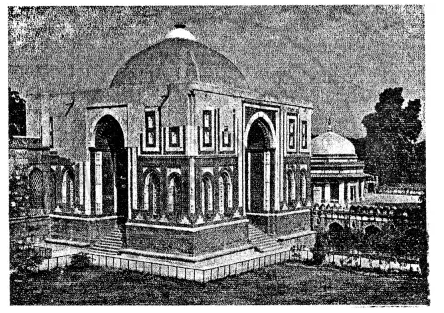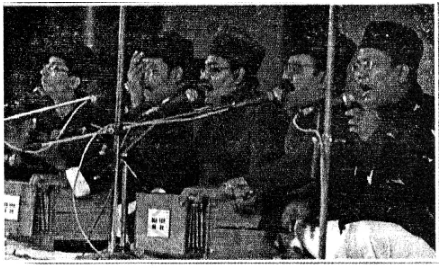Advertisements
Advertisements
प्रश्न
Answer the following question briefly:
Describe the important developments which took place in the following fields during the Sultanate period:
Music
उत्तर
Music: During this time fusion of Perso-Arabic and Indian classical music styles were done and the outcome of it was Hindustani Music. New musical instruments like the tabla, sitar, and sarangi were also developed during this time. The Persian style of chorus qawwali was also popularized during this timer.
संबंधित प्रश्न
This is a picture of the most beautiful specimen of Khilji architecture, which was added as an entrance to the Qutb complex in Delhi.

With reference to the reign of this ruler, mention two important features the Reorganization of the army
This is a picture of the most beautiful specimen of Khilji architecture, which was added as an entrance to the Qutb complex in Delhi.

With reference to the reign of this ruler, mention two important features of the Revenue reforms
State whether the following statement is True or False:
The Sufi saints believed in one God.
State whether the following statement is True or False:
The village administration was managed by the Bakshi.
This is a picture of a popular form of devotional music.

- What is the name of this form of music?
- Name the famous personality who created this.
- What is the theme of the music?
State whether the following is true or false:
The Delhi sultans always allowed the ulema to influence their policies.
Answer the following question in one or two words/ sentences:
During whose reign did the life and conditions of the peasants improve?
Answer the following question briefly:
Discuss the distinctive features of Sultanate architecture.
This is a picture of a musical instrument used in Hindustani classical music. The name is derived from the Persian words—‘seh’ (meaning ‘three’) and tar’ (meaning ‘strings’).

Identify the musical instrument.
This is a picture of a musical instrument used in Hindustani classical music. The name is derived from the Persian words—‘seh’ (meaning ‘three’) and tar’ (meaning ‘strings’).

During which period in medieval Indian history was this instrument invented?
